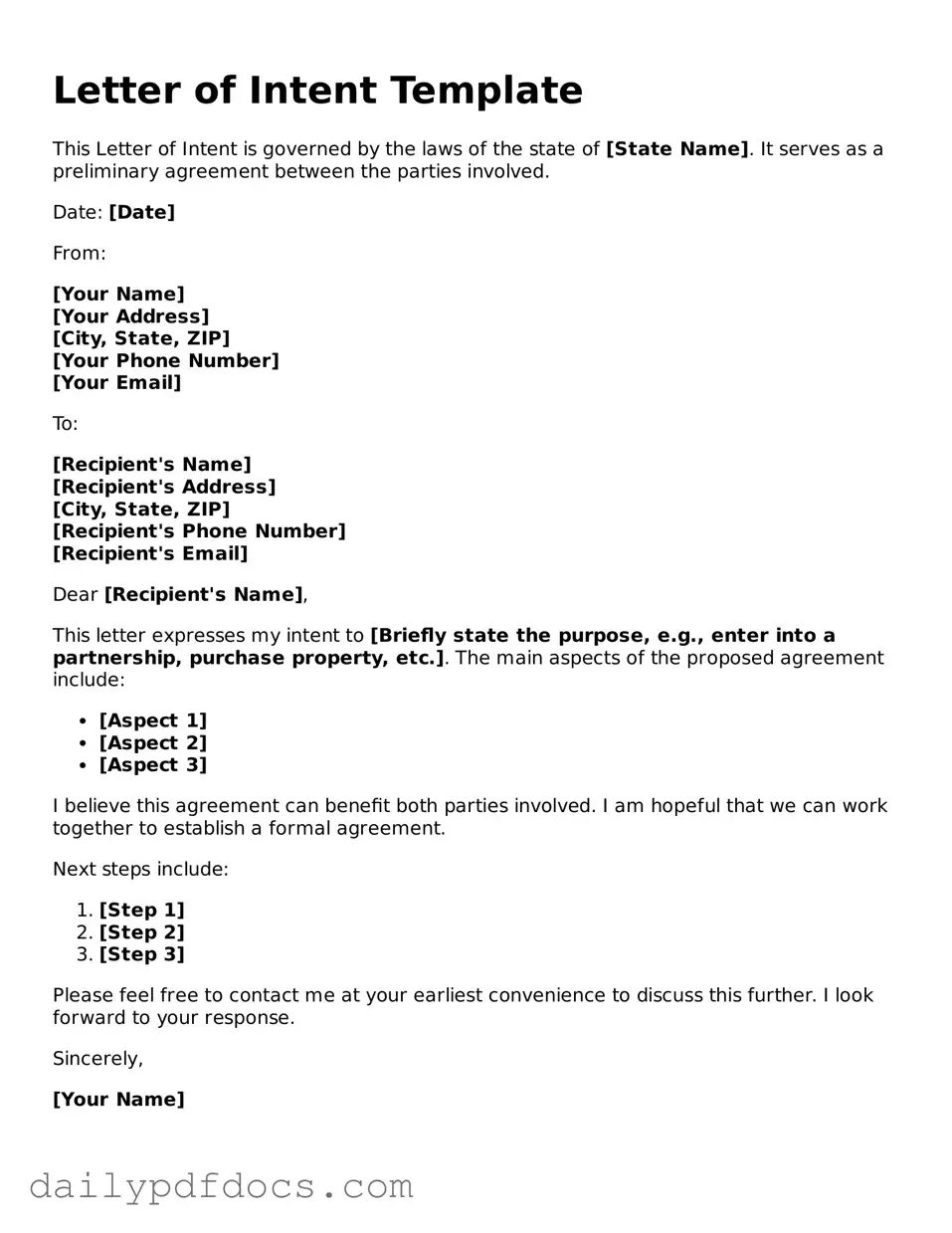What is a Letter of Intent?
A Letter of Intent (LOI) is a document that outlines the preliminary understanding between two or more parties who intend to enter into a formal agreement. It serves as a way to express interest and can cover various topics, such as business transactions, partnerships, or real estate deals. While it is not legally binding, it sets the stage for future negotiations and clarifies the intentions of the parties involved.
Why is a Letter of Intent important?
An LOI is important because it helps to establish a mutual understanding before entering into a formal contract. It can prevent misunderstandings and miscommunications by clearly outlining the key points of discussion. Additionally, it shows commitment from the parties involved and can be useful in securing financing or other necessary approvals.
Is a Letter of Intent legally binding?
Generally, a Letter of Intent is not legally binding, but certain provisions within it can be. For instance, confidentiality clauses or exclusivity agreements may carry legal weight. It’s crucial to specify which parts of the LOI are intended to be binding and which are not. Consulting with a legal professional can provide clarity on this matter.
What should be included in a Letter of Intent?
A well-crafted LOI typically includes the following elements: the names of the parties involved, a description of the proposed transaction or agreement, key terms and conditions, timelines, and any confidentiality or exclusivity clauses. It’s important to be clear and concise to avoid ambiguity in future negotiations.
How does a Letter of Intent differ from a contract?
While both a Letter of Intent and a contract outline the terms of an agreement, they differ in their purpose and legal standing. A contract is a legally binding document that requires both parties to fulfill their obligations. In contrast, an LOI is a preliminary document that expresses intent and outlines expectations, but it does not create enforceable obligations in most cases.
Can a Letter of Intent be revised?
Yes, a Letter of Intent can be revised. As discussions progress and negotiations evolve, parties may find it necessary to update the LOI to reflect new terms or changes in circumstances. It’s important to communicate openly and document any revisions to ensure that all parties are on the same page.
